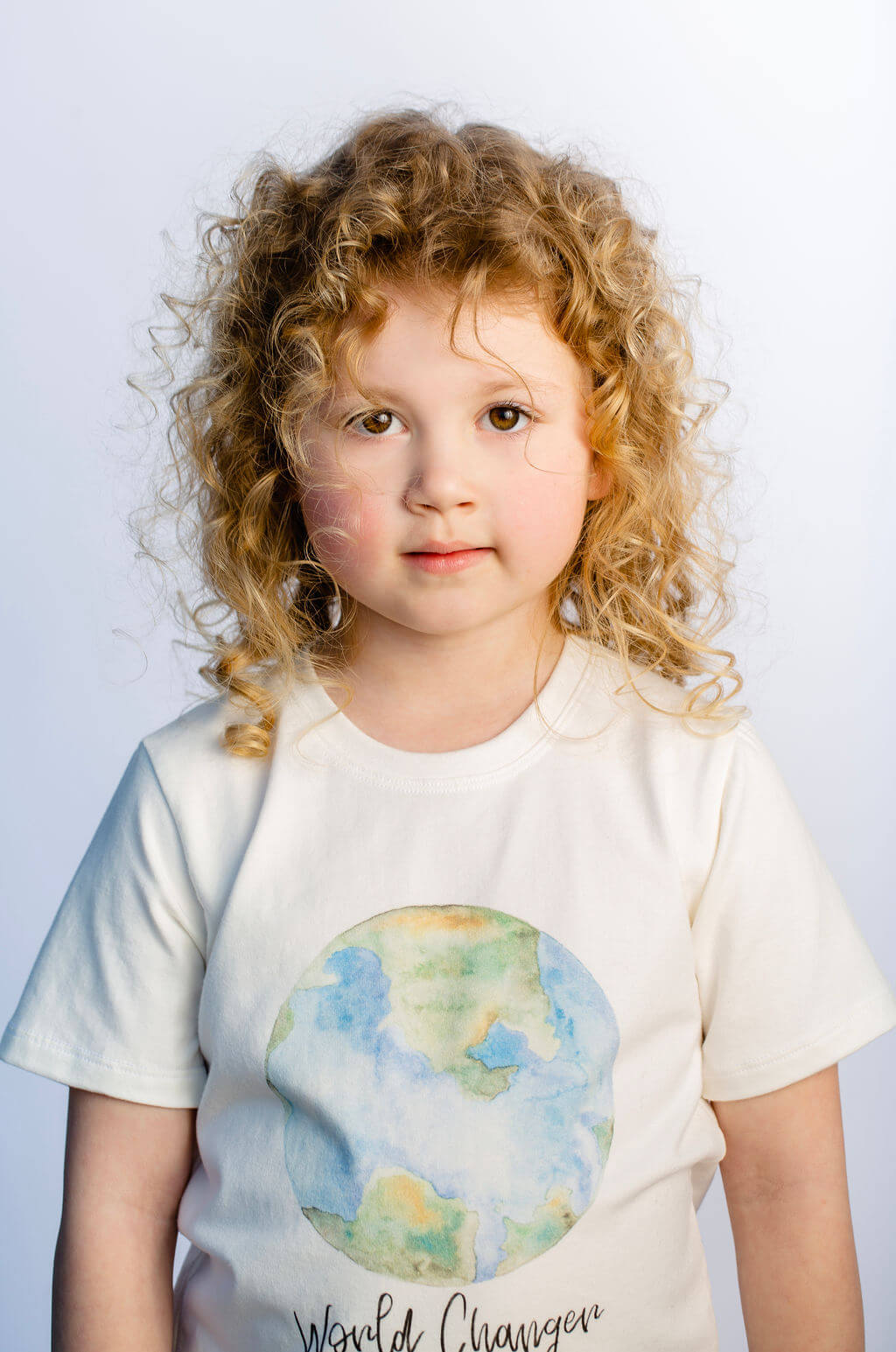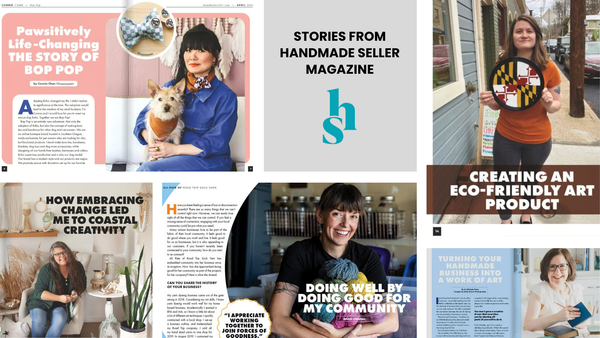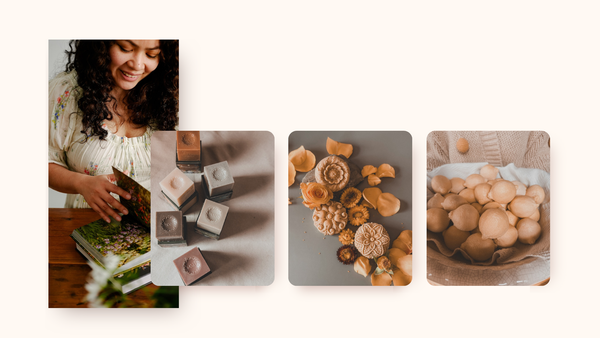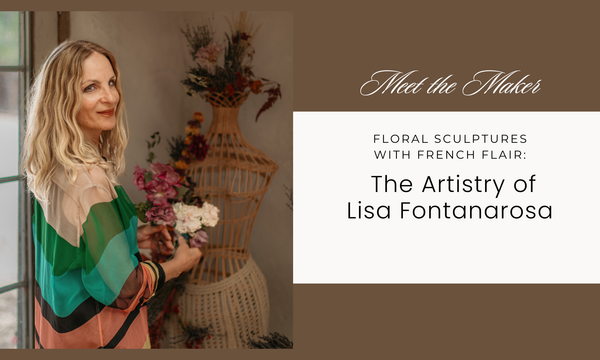Designer Royce Timoshevick on How Sewing Comfy Outfits for Her Premature Baby Inspired Her Business


When her youngest child was born eight weeks early at just 2 pounds, 2 ounces, Royce Timoshevick found calm and comfort in sewing him one-of-a-kind clothing out of soft organic fabric. Once her baby was home, she continued designing children’s clothing and felt an entrepreneurial spark. Soon after, Royce founded Think Big Little People, a mission-focused kids clothing brand that inspires children to think big. She aims to send positive messages about changing the world, love and kindness through her designs. “This isn’t just clothing. This is a movement,” Royce said about her brand’s purpose.
In the designer’s interview with Artisan Joy, Royce exudes positivity and offers helpful advice to other makers. Read on to see what she had to say.

Artisan Joy: Describe your artwork or craft?
Royce Timoshevick: Think Big Little People is a small-batch clothing line created to inspire our children to hink Big! I thoughtfully design each piece to be comfortable and stylish. Each detail is considered, from the eco-friendly, super soft organic fabric to the custom rainbow of colors, each with its own inspiring name such as “Big Idea Yellow” and “Save Our Oceans Blue.”
When my youngest was born eight weeks early at just 2 pounds, 2 ounces, I dug deep into sewing as a balm for my wayward imagination. When I couldn’t be visiting Little in the NICU, I found that sewing him soft, organic and comfortable clothing helped me look ahead to when we could bring him home.
Royce Timoshevick
Each part of the process is a joy to undertake as it is infused with the messages I want to share. Children have the power to change the world for the better, plant kindness and show that all love is special. In fact, some of my favorite pieces of this line are the printed tees. Local, eco-friendlier direct-to-garment printing has allowed me to use my own hand-water-colored artwork on these super comfy tees, which are meant to share these messages of changing the world, love and kindness.

AJ: How did you get started creating your art?
RT: Like most other artists and crafters, I’ve been creating since I was a kid! I’ve always been drawn to functional art and owned a paint-your-own ceramics studio for over a dozen years. I loved helping children explore their creativity while expanding my own as I find my creativity broadens when sharing with others.
My mom taught me to sew when I was young, and although she was not a particularly experienced seamstress, she, like many of her generation, learned the basics in a high school home economics class and passed what she knew onto me. Now in the age of Google, sewing advice, patterns and community are just a few clicks away.
AJ: When did you realize that you could turn your craft into a business?
RT: I have sewn here and there my entire life. Sometimes it was picking up a project to help along with a shoestring budget. Other times it was to craft something I just couldn’t find anywhere else. When my youngest was born eight weeks early at just 2 pounds, 2 ounces, I dug deep into sewing as a balm for my wayward imagination. When I couldn’t be visiting Little in the NICU, I found that sewing him soft, organic and comfortable clothing helped me look ahead to when we could bring him home.
Once he was home, I found myself continuing to pass the small hours of the evenings by choosing unique, organic fabrics and sewing them up into comfortable one-of-a-kind creations. It wasn’t long before I could feel the pull of entrepreneurship sending me toward a new business venture. I could sew together my inclination to design and create with my dedication to the idea that little people are big thinkers by nature. With the right support and encouragement (and the right clothes), they can do really big things!
AJ: Where do you find inspiration for your creations?
RT: My kids, of course! I have three utterly unique individuals pushing me to engage, be present and learn every day. In fact, the name Think Big Little People came from something my middle child said when they were young. I had asked, “What is the biggest thing you can think of?” Their answer, with no hesitation at all, was “love.”
AJ: How do you apply that inspiration to your work?
RT: Not only do my kids inspire me in the moment in things like design elements, pockets, comfort and durability, but their futures are always on my mind. How will our generation leave this planet for future generations? What will we teach our children about love and acceptance?
What messages do we want to endure? How do we foster the big thinking that will be necessary to affect the change the world needs? It’s these questions that keep me and my brand on the path of sustainability, social justice and seemingly less lofty but vitally important—learning through play. All of these concepts can be seen and felt throughout the Think Big Little People brand.

AJ: As creatives, we can be continuously creating and refining our art. How do you handle perfectionism?
RT: I find that perfectionism can get the better of me all too quickly, which means I have to have an outlet for it. Part of the draw for me of owning a small creative business is the many hats I must wear. Some of those hats demand perfection, some don’t. I try my best to allow myself the few perfect aspects while equally giving myself grace on the other less demanding jobs. It’s a work in progress.
AJ: What advice would you give to someone interested in putting their art out into the world but feels vulnerable about it?
RT: Find a friend. Having someone, just one genuine person, in your corner makes all the difference.
AJ: Has someone ever criticized your artwork? How did you handle it?
RT: Of course! Can you call yourself a creative if you haven’t been criticized? I try to remind myself that differing perspectives are part of the rich fabric of our society, and then, after a good whine to a friend, I try to see if I can glean anything from the criticism. If I can take something that hurt and put it to work for me, I find it all the more powerful.
AJ: Creatives are often very in tune with what’s happening in the world. Sometimes it can feel overwhelming. If this happens to you, how do you cope?
RT: There is so much to be overwhelmed by, but for me, the same rule applies to a sink full of dirty dishes as it does to the world at large. If you see things piling up and they’re beginning to seem an impossible task, dive in with both hands.
AJ: Are you are passionate about a cause and why?
RT: I love working with causes local to me in Sacramento, Calif. One of my favorites is the Food Literacy Center, with a mission to “inspire kids to eat their vegetables.” They focus on teaching children in low-income elementary schools skills like cooking, gardening, nutrition, and active play to improve our health, environment, and economy. You can find them at foodliteracycenter.org.
AJ: What brings you joy?
RT: Creating with my children is almost a guilty pleasure. I love to get out the play dough and rolling pins and found objects like leaves and twigs and simply create with them.

Sometimes, when you own a creative business, creating can become a chore, but when I create with my kids and watch them dig in with no agenda or goal other than to have fun, it truly brings me joy.
Thanks, Royce! Think Big Little People products are available for purchase at thinkbiglittlepeople.com. You can also follow the brand on Instagram, Facebook or Pinterest.
This interview has been edited slightly for clarity.




